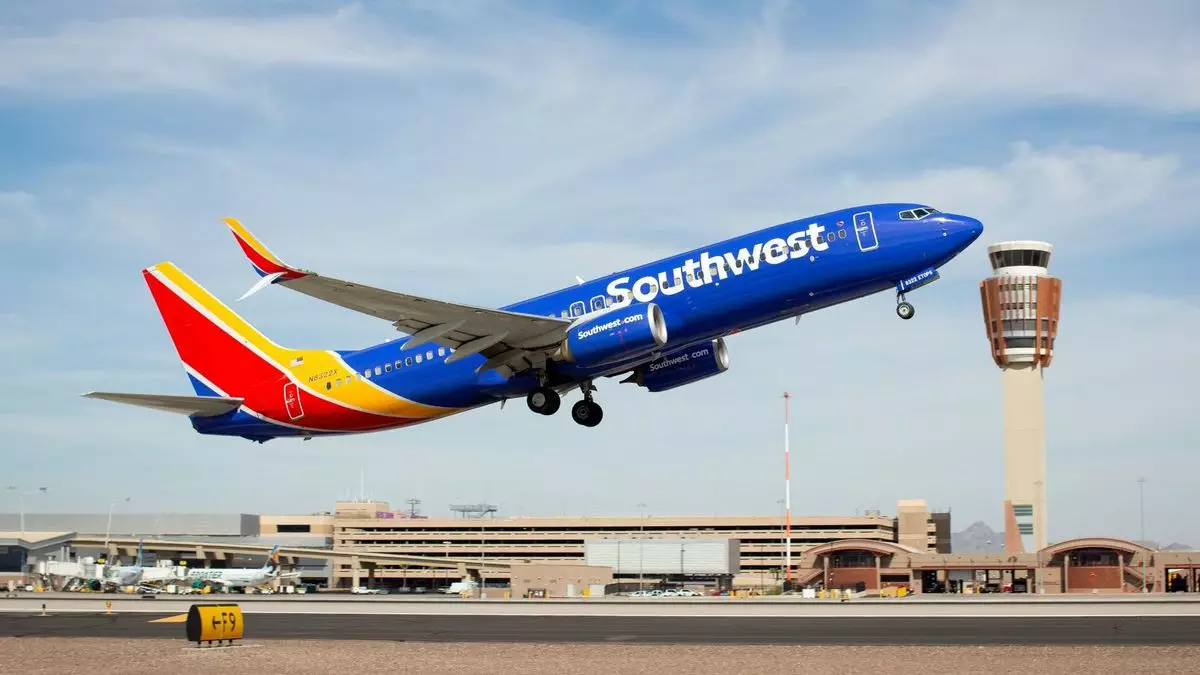In a strategic move that marks a significant evolution in its service offerings, Southwest Airlines has launched its inaugural red-eye flights, officially entering the competitive market of overnight journeys. This recent development, which began on a Thursday night, features five routes from bustling hubs like Las Vegas, Los Angeles, and Phoenix to various destinations east of the Mississippi River. This expanded service not only represents a fresh approach to air travel for the airline but also showcases its commitment to enhancing customer connectivity and improving operational efficiency.
Currently, Southwest operates five daily red-eye flights: connecting Las Vegas to Baltimore and Orlando, as well as Los Angeles to Baltimore and Nashville, and Phoenix to Baltimore. However, this is just the beginning. By June, the airline plans to significantly increase its overnight flight offerings to a total of 33 each day. This ambitious growth is not merely about expanding routes; it is part of a broader strategy to revitalize Southwest’s performance in an industry where it has struggled to keep pace with competitors like Delta, United, and Alaska Airlines since the onset of the pandemic.
The introduction of red-eye flights aligns with Southwest’s strategic vision to enhance profitability, which has faltered in recent years. This initiative, alongside plans to implement assigned seating and additional legroom options by 2026, indicates the airline’s desire to rethink its operational framework. Furthermore, Southwest is keen to streamline its services by incorporating cost-cutting measures that can reinforce its financial standing and improve customer satisfaction.
Southwest Airlines has emphasized that the move towards overnight flights serves dual purposes: enhancing aircraft utilization and providing customers with increased travel options. For instance, the planned overnight route from Honolulu to Las Vegas, which launches in April, will increase itinerary possibilities for travelers from Hawaii by 50%, showcasing how overnight services can connect passengers through Southwest’s extensive network. Indeed, the airline reports that nearly 75% of passengers booking red-eye flights are doing so as part of a larger itinerary, which speaks to the demand for seamless travel connections.
Additionally, Southwest has initiated an interline agreement with Icelandair, which fuels further expansion plans. It is the airline’s first collaboration of this nature in decades, reflecting a willingness to innovate and partner with international airlines. Initially, available itineraries will be bookable through Icelandair’s channels, with connections facilitated through Baltimore, and plans are in place to incorporate Denver and Nashville later this year. Until Southwest implements its assigned seating policy, tickets for Icelandair segments will not be available on Southwest’s platforms, highlighting a cautious yet calculated approach to integration.
Overall, the launch of red-eye flights and additional partnerships positions Southwest Airlines at the forefront of the evolving air travel landscape. By adopting a forward-looking vision and creating synergies that expand its reach and capacity, Southwest is redefining its place in an industry where adaptability is crucial. As the airline progresses with its plans, it will be interesting to observe how these changes will enhance both operational performance and customer experiences, ultimately determining its long-term success in an ever-competitive market.


Leave a Reply